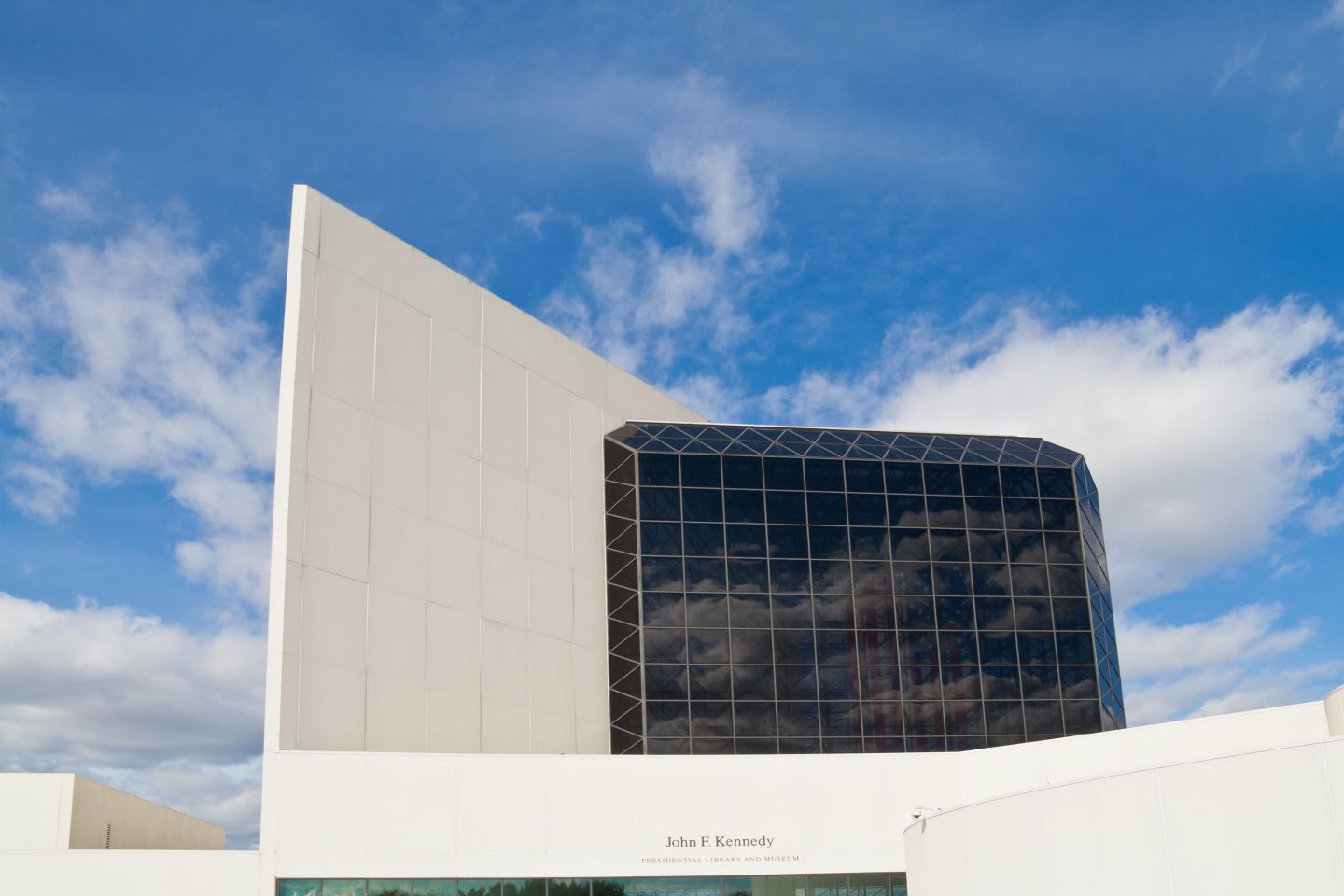In honor of Presidents’ Day, Buxton decided to study visitor trends at the top United States presidential libraries and the tourism impact they have on the communities.
Every president since Herbert Hoover has a library, bringing the total to 15, with 13 of the buildings complete. In September 2021, Barack Obama broke ground on his presidential center on the South Side of Chicago, which will include a museum, an indoor garden gathering space, a park with resources for the community, and a new branch of the Chicago Public Library. Obama’s library will be the first to have an all-digital archive. Donald Trump has made no official announcement of the location for his.
The Office of Presidential Libraries – National Archives and Records Administration – oversees the libraries and connected museums. These virtual and physical libraries preserve artifacts and documents such as presidential papers, photographs, film, and other records from a president’s administration and are available for the public to use for research.
The libraries, ranging in size from the Herbert Hoover Presidential Library and Museum at 47,169 square feet to the John F. Kennedy Presidential Library and Museum at 166,573 square feet, bring tens of thousands of visitors each year, and those visitors create a direct impact on the businesses and restaurants surrounding the libraries. Using Buxton’s Mobilytics application, we analyzed visitor traffic from the past two years at five of the top libraries.
Let’s take a look, starting with the newest library.
George W. Bush Presidential Center
As the 43rd president, George W. Bush was in office from 2001 to 2009 and is the third president to place his library in Texas.
Since opening at Laura Bush’s alma mater, Southern Methodist University, in 2013, the George W. Bush Presidential Center has welcomed hundreds of thousands of visitors from across the country to its library, museum, 15-acre park, full-service restaurant, and café. Four of the library’s top visitor markets are in Texas – Dallas/Fort Worth, Houston, Austin, and San Antonio – and the other top markets include Los Angeles, Denver, Atlanta, and New York City, as seen on the map below.
Either before or after enjoying the library, visitors also frequently go to high-end retail centers in Dallas and the surrounding communities. This includes nearby options like Highland Park Village and West Village, as well as farther out areas such as Legacy West in Plano and the Center at Preston Ridge in Frisco.
The William J. Clinton Presidential Center
Located in Little Rock, Ark., the Clinton Presidential Center opened in 2004, three years after the end of William “Bill” Clinton’s second term.
Along with the library and museum, the center also boasts a restaurant and bar, a 30-acre park, a monument to the history of human rights in Arkansas, a wetlands boardwalk, the Clinton Presidential Park Bridge, and the University of Arkansas Clinton School of Public Service.
Most of the center’s visitors either come from within Arkansas or from metro areas in Arkansas’ neighbor states, e.g., Dallas-Fort Worth, Memphis, Houston, and Oklahoma City. While many visitors stop at the local Walmart, Target, or Home Depot before or after visiting the center, many also head down the street to the nearby Hilton Doubletree Hotel or the Rev Room, a concert venue with a wide variety of acts.
The Ronald Reagan Presidential Foundation and Institute
In office from 1981 to 1989, Ronald Reagan chose Simi Valley, Calif., for the site of his library. Since his death in 2004, it has consistently been the most popular presidential library, according to the Washington Post.
Along with the library and museum, there’s also the Ronald Reagan Institute, a center for public affairs, a learning center to “develop and inspire the leaders of tomorrow,” the Air Force One Pavilion, Air Force One Discovery Center, and multiple dining options.
While the library also draws visitors from across the country, almost 75% come from within the state of California, followed by 3% from Arizona, and 2% from Texas.
Much like the visitors to Bush 43’s library, the most common destinations for before or after seeing Reagan’s presidential library are shopping areas. Simi at the Plaza, Center Court, Simi Valley Plaza, and Thousand Oaks Marketplace are just a few of the other stops people make on their trip.
The John F. Kennedy Presidential Library and Museum
Though only in office from 1961 to 1963, John F. Kennedy began planning for his library in the fall of ‘61. Even so, because of construction delays and disputes about where the library would be built, the John F. Kennedy Presidential Library didn’t open until 16 years after his death.
Designed by Ieoh Ming Pei and built on land donated by the University of Massachusetts – Boston in Dorchester, Mass., the library features a museum and an archive of documents and records and is the only official memorial to Kennedy.
The library draws crowds from across the Northeast, including Massachusetts, New York, and Rhode Island, but it also pulls from farther areas, like Los Angeles, Chicago, Washington D.C., and Minneapolis.
While some visitors did head to shopping centers before or after the library, many headed to other tourist destinations – Harvard, the New England Conservatory of Music, the USS Constitution Museum, the Museum of Fine Arts in Boston, and North End Park. Knowing that the library’s consumer base overlaps with these other locations’ bases opens a door for potential partnerships and tourism deals between organizations.
Dwight D. Eisenhower Presidential Library, Museum & Boyhood Home
As the 34th president, Dwight D. Eisenhower was in office from 1953 to 1961. He chose his hometown of Abilene, Kan., for his library. Before it opened in the early ‘60s, parts of the campus were used as a World War II veterans memorial.
The Dwight D. Eisenhower Presidential Library, Museum & Boyhood Home campus includes the library and museum, a visitor’s center built on the site of Eisenhower’s old elementary school, Eisenhower’s boyhood home, and the Place of Meditation (Eisenhower’s final resting place).
Over half of the library’s visitors are Kansas residents, and of those visitors, 19% live within 25 miles of the library. The city of Abilene has a population of just over 6,000 people, a history of cowboys and cattle drives, is proud to be named one of the “Best Small Towns to Visit” by Smithsonian Magazine.
The Bottom Line
Presidential Libraries attract a wide variety of visitors, from families and kids on field trips to history buffs. They are at the top of many sightseeing lists and because they are one-of-a-kind, communities and business leaders have a great opportunity to cater to these visitors and keep them coming back.
For tips on how you can market your tourist destinations, check out this blog.


